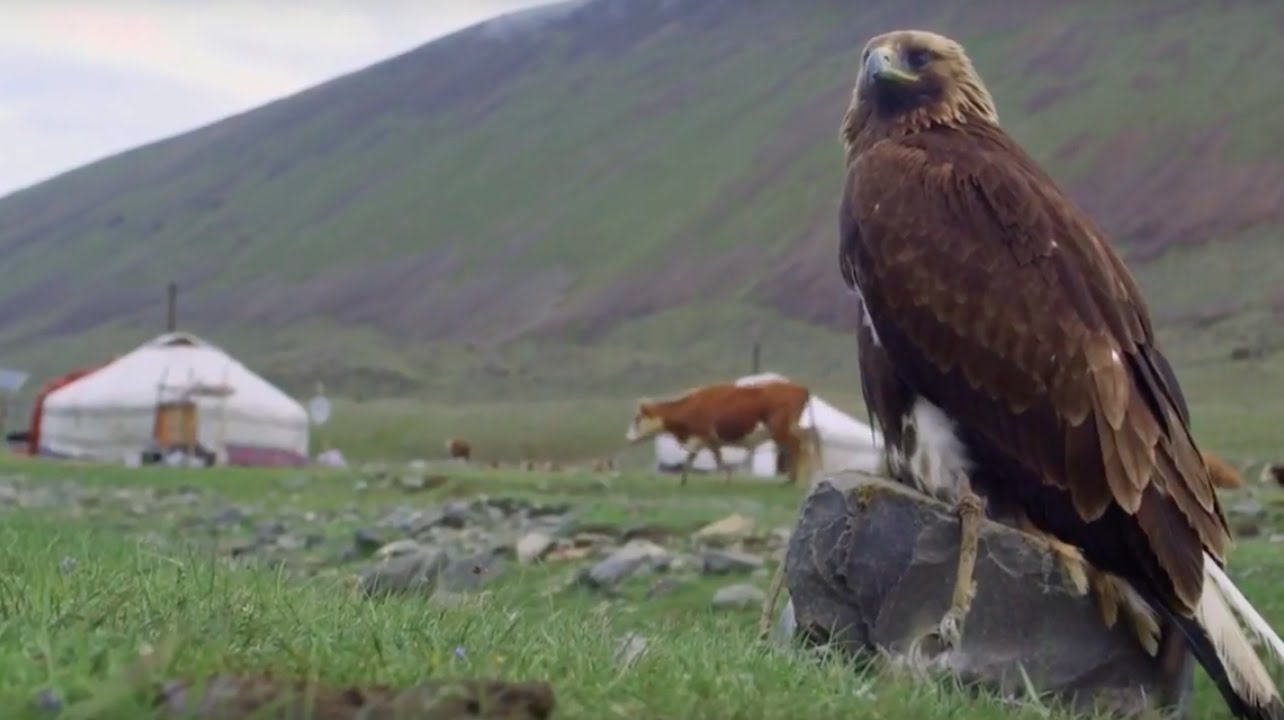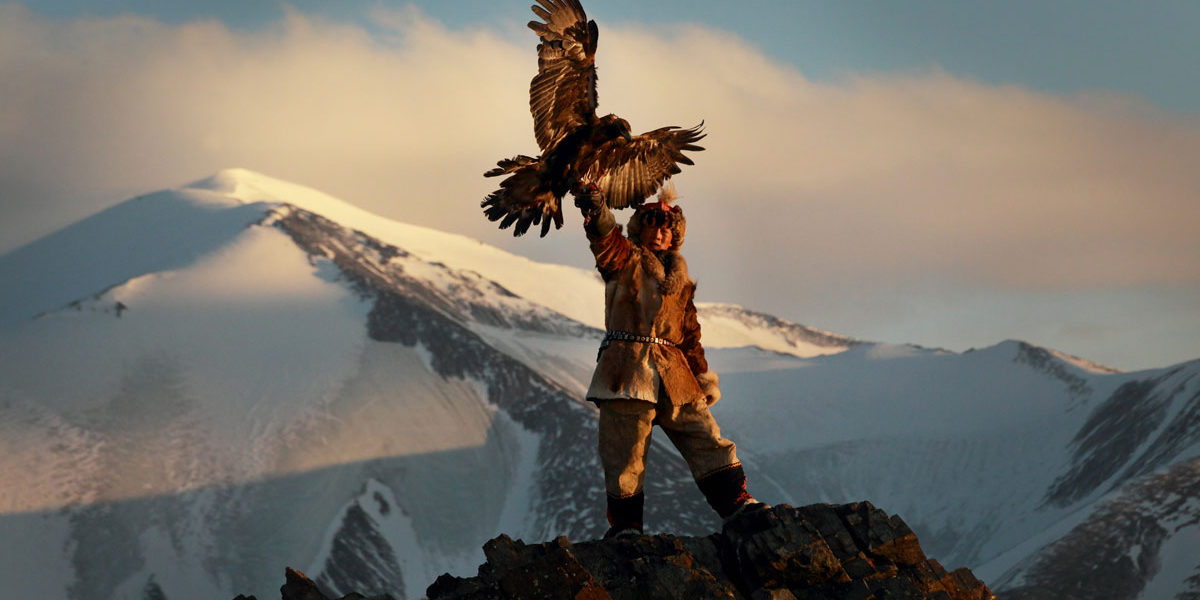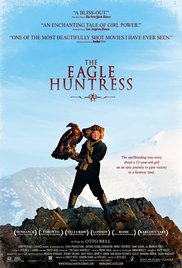 Director Otto Bell/2016
Director Otto Bell/2016
The Eagle Huntress is a rare bird of a documentary. It has a unique subject matter that is both foreign to many of its potential viewers, and it is also empowering. The fact that it is family friendly, female-centric, and narrated by new Star Wars: The Force Awakens star Daisy Ridley only adds to its charm.
Aisholpan Nurgaiv is a 13-year old girl from a Kazakh family in Mongolia. While her family has a home, they are also nomadic ranchers living in the their yurts and moving across the land to allow their animals to graze and for them to hunt.
Aisholpan’s father is also a champion eagle hunter. For thousands of years, the art of eagle hunting has been passed down from father to son. There is much involved in this ancient and revered tradition. Eagle hunters are required to capture their own eagle from the nest. Often the nests are high in the rocks and crevices of the nearby mountains. Using the simplest of tools, mainly rope, the future hunter will find his way to the nest and not only try to capture the eaglet, but also avoid the angry mother who might be returning to the nest with food.
Once the eagle is captured and brought back, it must be trained. This includes training that bonds the eagle with its human hunter, as well as training the eagle to attack prey on command and fly to its human hunter on command. Of course all of this must be done on horseback while the human rider is decked out in traditional eagle hunting garb which can be quite bulky and heavy since much of the hunting is done in the extreme cold temperatures of nearly -40 degrees Fahrenheit. Eagles often weigh about 15 lbs, and must be perched on one’s arm while riding the horse, making this a very difficult and strenuous task for anyone.
The Eagle Huntress is an empowering film for girls especially, but it is also for everyone. Aisholpan’s commitment to earn her place in this tradition by doing every requirement to its fullest extent is inspirational.
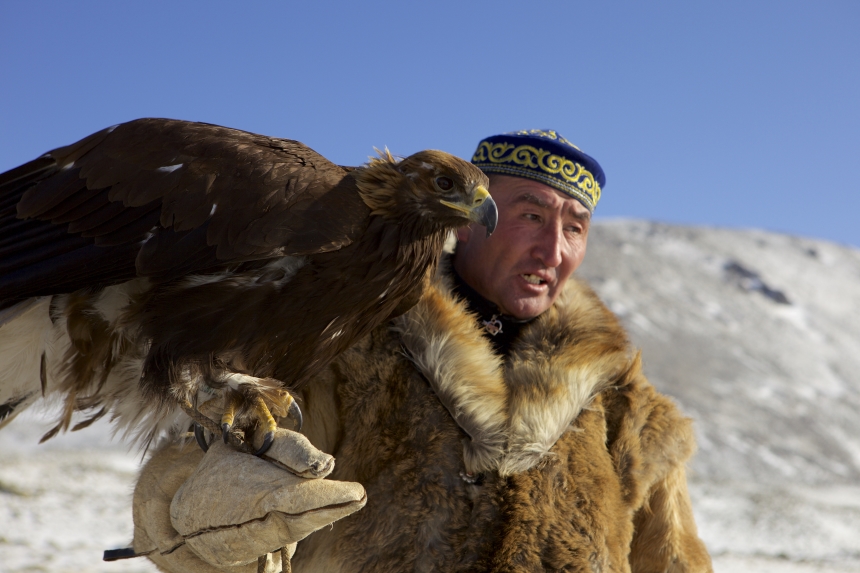 And so for generations upon generations, this has been an exclusively male dominated tradition. Aisholpan is different, and her father understands this. Seeking the blessing of a local elder, and in the face of gender prejudice among his peers, he begins to train his daughter so that she can participate in the annual Eagle Hunting Festival that is done for tourists and such. For the participants themselves, it is a highly competitive and honor-based contest.
And so for generations upon generations, this has been an exclusively male dominated tradition. Aisholpan is different, and her father understands this. Seeking the blessing of a local elder, and in the face of gender prejudice among his peers, he begins to train his daughter so that she can participate in the annual Eagle Hunting Festival that is done for tourists and such. For the participants themselves, it is a highly competitive and honor-based contest.
When Aisholpan stuns everyone with a victory, she is written off by her detractors as being given the crown for being a girl. One could argue that in this culture, that would probably work against her since most are unwilling to change this well-established male tradition. Her true test isn’t whether she can win a contest filled with various events for costume, horse riding style, as well as some of the aforementioned eagle commands. The true test is whether she can enter the frigid mountains and use her eagle to hunt, kill, and bring back a fox. To do this, she must stay in the mountains until she does, if she is to be a true Eagle Huntress.
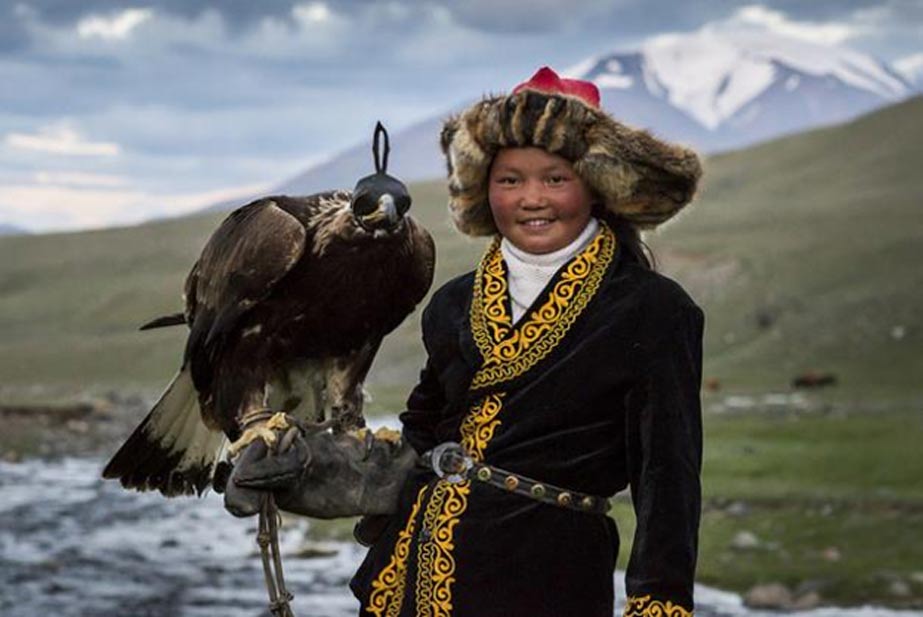
The cinematography of this film is provided by Simon Niblett who is probably most well known for his work on the documentary, Penguins, where he served as director of photography. Here, Simon provides us with sweeping aerial shots that fly us over the terrain and topography like the very eagle that Aisholpan is training.
To say that the scope and landscape is beautiful, would be an understatement. This beauty isn’t a lush paradisaical one, however, but a rugged beauty that demonstrates not only the natural obstacles Aisholpan will have to overcome if she is to become a true eagle huntress, but it also shows the beauty of this land to display the reverence this Kazakh culture holds for the natural world they live in and share.
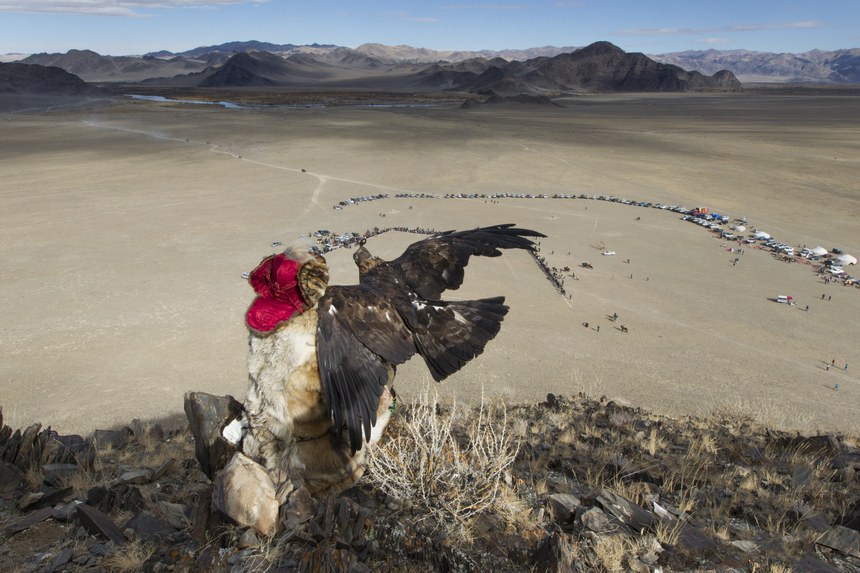
The Kazakh culture’s honoring of the world they live in is admirable. Eagles that are trained are only used for 7 years before they are returned to the wild. Aisholpan’s father is seen setting an eagle free and sacrificing a lamb for the eagle as thanks for the eagles contribution to their family. It is provides the eagle one last meal before it will be completely on its own, but it is also a symbol of the Kazakh’s notion that they are simply a part of the circle of life, to borrow a phrase, and must be good stewards of their world.
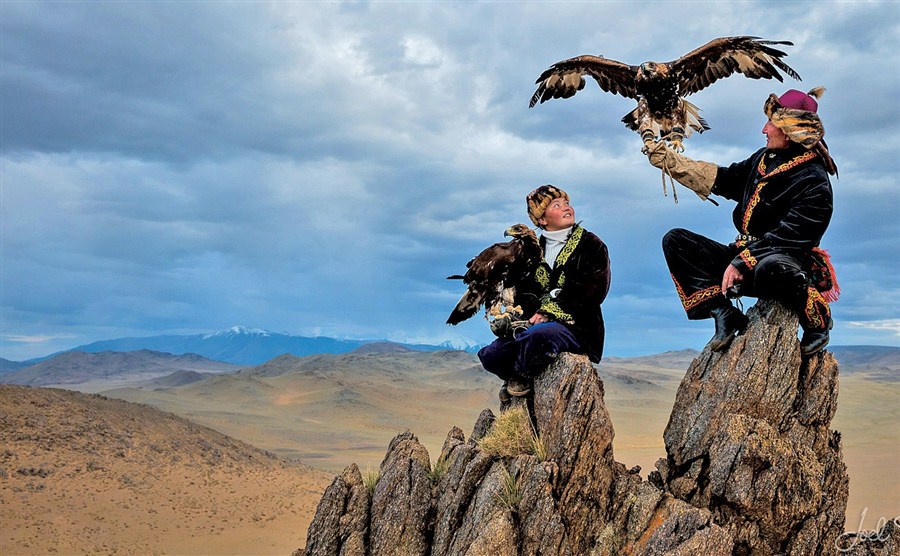
The Eagle Huntress is an empowering film for girls especially, but it is also for everyone. Aisholpan’s commitment to earn her place in this tradition by doing every requirement to its fullest extent is inspirational. The culture she comes from is only willing to change their perceptions and prejudices as she shatters the glass ceiling on every test required of all eagle hunters. They are tough critics, but ultimately they are fair ones. One girl accomplishing what, up to that point, only men had done has now opened a door of acceptability for every young girl who follows.
As a father who watched this film along with both his daughter and his son, it was important truth for them to grasp, namely that gender is not a deciding factor in terms of who can do what in this world. The deciding factor is whether one is willing to work hard, overcome adversity, and at the same time maintain their unique identity among their culture without compromising one’s values, or impeding the rights of others. Aisholpan’s journey is an example to look to, and The Eagle Huntress certainly soars on the wings of such eagles.
